Places, places are still there. If a house burns down, it’s gone, but the place—the picture of it—stays, and not just in my rememory, but out there, in the world. What I remember is a picture floating around out there outside my head. I mean, even if I don’t think it, even if I die, the picture of what I did, or knew, or saw is still out there. Right in the place where it happened. (43)
Toni Morrison
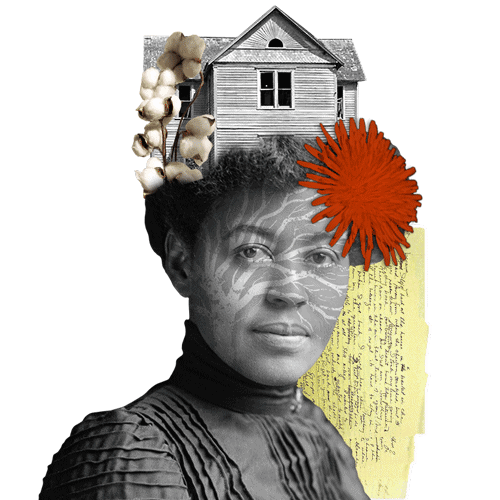
Beloved
Toni Morrison

Recommended Edition: Toni Morrison, Beloved, Vintage International, New York
Slavery is the original sin of the novel. Its trauma haunts all the characters.
The novel’s present moment is 1873, after Emancipation, but the psychic trauma of slavery lasts in the memories of the characters and in the stories they do not tell. Beloved is the embodiment of that trauma. The central events of the novel take place 18 years in the past when Sethe, her husband Halle, Paul A, Paul D, and Sixo attempt to escape the Garner plantation called Sweet Home. Only Paul D and Sethe make it out. Paul D is sold to a different plantation where he attempts to kill the plantation owner, for which he is sent to a hard-labor prison camp, from which he then escapes but bears the scars from that experience along with the scars from Sweet Home. A severely beaten and pregnant Sethe escapes toward Ohio and her mother-in-law, Baby Suggs, who is caring for Sethe and Halle’s three children, two boys and a daughter. A fourth child, another girl, is born on the way with the help of a white girl named Amy Denver. Sethe makes it to Baby Suggs barely alive. Then 28 days later, schoolteacher, his nephews and the sheriff – the four horsemen – arrive to take Sethe back. Rather than allow her children to return to slavery, Sethe attempts to kill them. She succeeds in killing her oldest daughter. Morrison based this part of the plot on an 1856 story of Margaret Garner, an escaped slave who attempted to kill her children rather than watch them brought back into slavery. Garner also killed one daughter. She was tried in Cincinnati and eventually sent back to her former owners. In the present moment of the novel, Sethe and her younger daughter Denver have been living in Baby Suggs’ house at 124 Bluestone Road estranged from the rest of the Black community. Out of jealousy, they did not warn Baby Suggs, who had been their unofficial preacher, gathering the community together on Saturdays and helping them heal through loving themselves, that schoolteacher was on his way. After Sethe’s act, the community shunned her altogether. Baby Suggs retreated and died, the two boys ran away, and Sethe and Denver live alone in the house with the spiteful ghost of the daughter. Paul D arrives, exorcises the ghost and tries to start a new chapter for both himself and Sethe. When Beloved appears in their lives, she chases Paul D away and nearly kills Sethe. It is Denver’s bravery, stepping out of the house and into the community for help, that saves herself and Sethe. It is the community that finally successfully exorcises Beloved, opening up space for a new life for Denver, Sethe and Paul D.
Why This Text is Transformative?
Perhaps the reason this student loved the novel so much is its insistence on the capacity for love and community, its belief in the possibility of healing.
Beloved is a powerful novel. Upon finishing it, one student looked up and said, “I love this novel.” Perhaps the reason this student loved the novel so much is its insistence on the capacity for love and community, its belief in the possibility of healing. While Morrison focuses on the range of dehumanization of African Americans, from the image of the ceramic “blackboy’s mouth full of money” on the shelf in the home of two abolitionists (300), to the egregious dehumanizing capacity of schoolteacher who uses science as rationalization for enslavement and torture, she places the strength of community and the grace of self-love at the center of the novel. The novel is about memory, about how the past lives in the present but also the ways that the past can be healed and our bodies purified when we have a community toward which we can offer up our hearts. Baby Suggs stands at the center of the community, guiding each man, woman and child to heal their hearts. In the end, it is this same community who, in overcoming their pettiness, rescues Sethe and Denver. The pain that Beloved represents, not only for these characters but for the “sixty million or more” to whom Morrison dedicates the novel, must be faced and witnessed.
A Focused Selection
Study Questions
Chapters 3-6

pages 34-75
Look at the story of Denver’s birth that runs from page 36-44. Whose narrative voices are woven into this telling? What effect does shifting narrative perspective have on the story of Sethe and Amy Denver?
Much of this novel is told in flashback stories. What effect does that have on the progression of the story moving forward in its present time? Do you have stories that frame your choices in the present moment?
On page 43, Sethe speaks of rememory, the way that the past continues in the present, even when we can’t see it. She concludes that “nothing ever dies.” Do you agree? How does the novel agree or disagree with what Sethe says?
Look closely at the arrival of Beloved on pages 60-63. What does the imagery surrounding Beloved suggest about this character? What happens to Sethe when she sees Beloved?Why does Paul D not press Beloved about why she is running? What do his reasons tell you about the life for African Americans at that time?
In chapter 6, Sethe begins telling Beloved stories, starting with the story about her earrings. The past chapters have been about storytelling as well and rememory. In this chapter we get stories that are unspeakable, and Sethe’s admission that she cannot remember much from her life before Sweet Home. What is the difference between stories told and stories untold?
Chapters 7-9
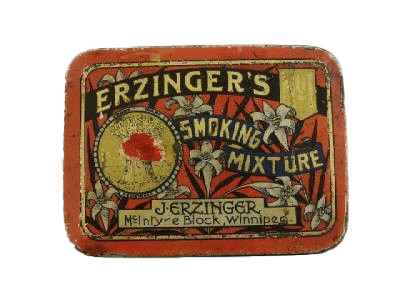
(pg 76-124)
Chapter 7 adds more painful memories to the night that Sethe ran from Sweet Home. What more does she have to add to her memory of that night? What is her response? Choose quotes from the text that explain Sethe’s response to Paul D’s story of that night. What is Paul D’s response to that night?
Chapter 8 finishes the story of Denver’s birth, but Denver’s response to the story has shifted. What is different about the way that Denver receives the story of that night? What has shifted for her?
Chapter 9 begins with a story about Baby Suggs’s preaching. How is this section different from all the others around it? What imagery is associated with Baby Suggs’s preaching?
Sethe remembers the night that Stamp Paid brought her and Denver across the river. She concludes “Freeing yourself was one thing; claiming ownership of that freed self was another” (111-12). What do these stories that keep appearing have to do with freeing oneself? What did Baby Suggs’s preaching have to do with freeing oneself?
Building Bridges
A Recommended Pairing
Medea
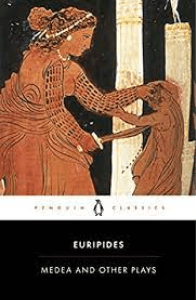
You can consider pairing Beloved with Medea for the parallels of infanticide. Medea’s actions are premeditated; Sethe’s are not. Medea’s actions are and act of vengeance; Sethe’s are more about self-preservation. It would be interesting to gauge students’ responses to both characters.
Frederick Douglass
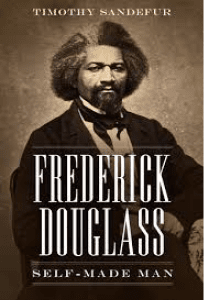
Beloved can also be paired with Frederick Douglass and the Lincoln/Stephen Douglas Debates over slavery.
Supplemental Resources
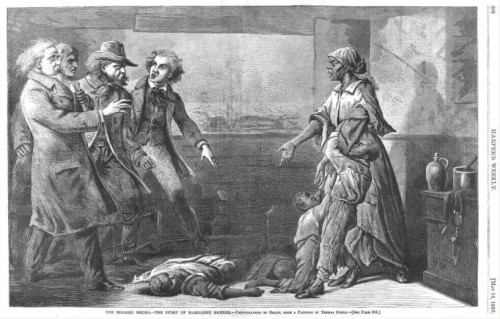
An 1864 illustration depicting “The Modern Medea: The Story of Margaret Garner.”
Digital Public Library of America
1987 PBS News Hour Interview: Toni Morrison with Charlayne Hunter-Gault
Cincinnati Museum Center: Background on Margaret Garner
Text Mapping
Discipline Mapping
English/Composition Studies
Humanities
Sociology
African American Studies
Page Contributor



